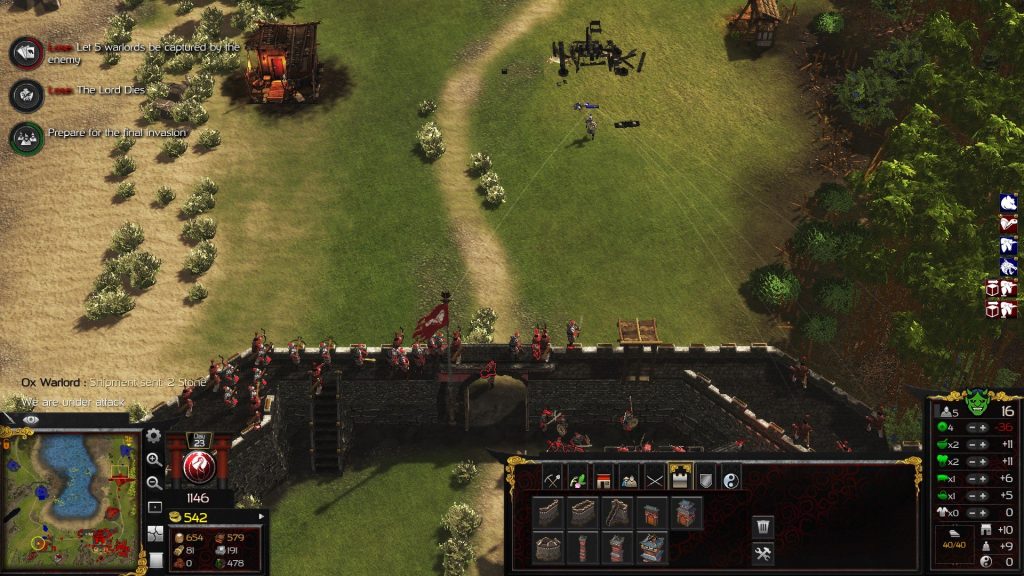

In multiplayer and skirmish vs AI, on the other hand, that distinction is lost: not only are the unit rosters identical for each army, your Imperial Swordsmen will always speak Chinese even if you're playing as the Vietnamese. While the grand keeps and shining pagodas are detailed and attractive, these low polygon, flat-looking unit models could be outshone by something like the original Company of Heroes, which came out almost 15 years ago.Įach of the six single-player campaigns, which are around six to 10 hours long, take you to a different time and place in history, they only seem like distinct factions because most missions limit what you can build. It's not terrible, it just feels very behind the times compared to more recent RTSes like Northgard or Total War. But overall, these fights are very old-school Age of Empires in their pacing and scale. Field battles just aren't as interesting, though.įights are very old-school Age of Empires in their pacing and scale.There is a huge gap in movement speed between lower-tier skirmishers and the tanky imperial troops you can get later in the tech tree, which does allow a savvy commander to outmaneuver a more potent army and win the day.
#Stronghold warlords reviews how to#
And figuring out how to take on an enemy fortress, probing for weak spots and choosing your opportunities carefully, can be exciting as well. All the modular pieces you can construct your walls and towers from allow for some interesting and clever set-ups to maximize your advantages against a larger force, especially if you know a thing or two about how real castles were designed in these eras. But once those armies get on the move, that's sort of all it boils down to.Ĭombat in Stronghold Warlords is at its best during sieges, whether you're on the attacking or the defending side. This helps your cities feel like a bit more than just a collection of peasants dumping gold in a pile to fund your armies like in a traditional RTS.

You can choose whether to keep your people in line through love or fear.Keeping happiness at least somewhat positive is important because it's the only way your population will grow, and raising taxes to afford higher-tier units is only possible if you're giving something back in return, like more rice rations or fancy new silk duds. I enjoyed the tension this created because I could see how much productivity I could squeeze out of my people and also keep each new stronghold from feeling like a repeat of the last. The other offers creature comforts that will inspire the troops and endear you in the hearts of the commoners, but also lowers their resource output since they're spending too much time playing lawn darts or whatever. One building chain will let you construct torture racks and other unsubtle symbols of oppression, which make your workers work faster but demoralize your armies and reduce your popularity.
#Stronghold warlords reviews series#
That’s been true of the series as a whole, but Warlords has added a new wrinkle in that you can choose whether to keep your people in line through love or fear. It does a good job of scratching that Tetris-y itch and making long-term planning pay off. You really have to try and picture how everything is going to fit together, on top of building out your defenses to maximize your home field advantage. Decisions like placing your main stockpile close to resource collection areas can have a big effect on the efficiency of your economy, and keeping your people happy later on will partly depend on how many of your buildings are in the radius of temples. And it's not just the availability of natural resources you need to worry about. assuming no one razes it to the ground first. You're going to be turning an open plot of land into an impressive, thriving walled city. The biggest, often refreshing difference between a Stronghold game and, say, Warcraft or StarCraft, is in how it pushes you to think about space. And the city building, while it can be an interesting and almost zen little puzzle, often feels at odds with the goal of straightforwardly conquering your enemies. But as an RTS, it feels like it's still living in the mists of the past. Stronghold Warlords continues this tradition with a new flavor as it takes us, for the first time in the series, to the battlefields of ancient and medieval East Asia. For 20 years now, the Stronghold series has fortified itself in an interesting place somewhere between a city builder and a more traditional real-time strategy.


 0 kommentar(er)
0 kommentar(er)
